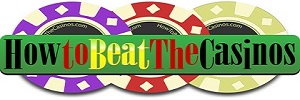Optimizing Bets for Better Odds on Blackjack Switch
Blackjack, often hailed as the king of card games, has captivated the hearts of gamblers for generations. And in its modern variants, Blackjack Switch stands out, offering an intriguing twist to traditional play. Players are dealt two hands instead of one and have the tantalizing option to switch the top two cards between hands. While this might seem like a dream come true for any blackjack enthusiast, the game’s rules have been adjusted to ensure the house maintains its edge. So, how does one navigate this dynamic version of blackjack and hopefully tip the scales in favor of profit?
Understanding the Rules: Before delving into strategies, it’s paramount to grasp the nuances that differentiate Blackjack Switch from its classic counterpart. The most significant change, besides the switch option, is that a dealer 22 is not a bust but a push against any player’s hand except for a natural blackjack. This alone significantly increases the house edge. Additionally, blackjacks pay even money rather than 3:2, another tweak that favors the house.
1. The Art of the Switch: The key decision in Blackjack Switch revolves around whether or not to switch the top cards of your two hands. Here, an understanding of basic blackjack strategy is crucial. For instance, turning a hard 16 and a hard 20 into two hands of 18 can be a good move. Similarly, if you’re dealt two face cards and a pair of fives, switching to create a pair of 10s and a 10-value hand is recommended. These decisions become intuitive with practice and a keen understanding of blackjack odds.
2. Doubling and Splitting: Given the unique nature of Blackjack Switch, doubling and splitting require a slightly different approach. It’s generally advisable to double down on 9, 10, or 11 if you have a favorable hand post-switch. Splitting, on the other hand, is more circumstantial and should be employed judiciously based on the dealer’s face-up card.
3. Stay Wary of the Side Bet: Blackjack Switch often comes with a side bet known as the Super Match, which pays out if the initial four cards contain a pair, two pairs, or three of a kind. While the idea of winning up to 40:1 on this side bet is tempting, the house edge is significantly higher. Unless you’re feeling lucky or just playing for fun, it’s often best to avoid this bet.
4. Mind the Dealer’s Card: A lot hinges on the dealer’s face-up card. If the dealer shows a 7 or 8, the switch often becomes more beneficial. For instance, turning a 15 and an 18 into a 13 and a 20 might be more favorable. However, if the dealer shows a 2 or 6, sticking with the original hands might be wiser.
5. Managing the Bankroll: It might seem repetitive to stress this, but bankroll management is the cornerstone of profitable gambling. Setting limits, understanding table stakes, and knowing when to walk away can mean the difference between a fun night out and a regrettable loss.
6. House Edge Realities: While employing these strategies can reduce the house edge in Blackjack Switch, it’s essential to remember that the house still has an advantage. The dealer’s ability to push on 22 is a game-changer and can often thwart even the most calculated strategies.
To sum up, Blackjack Switch is a refreshing take on the classic game, offering players new strategic depth and challenges. By understanding its nuances, mastering the switch, and making informed betting decisions, players can optimize their game for the best possible outcomes. But as always, the unpredictability is what makes gambling thrilling. Play responsibly, enjoy the game’s unique elements, and may the cards reward you with kindness!
